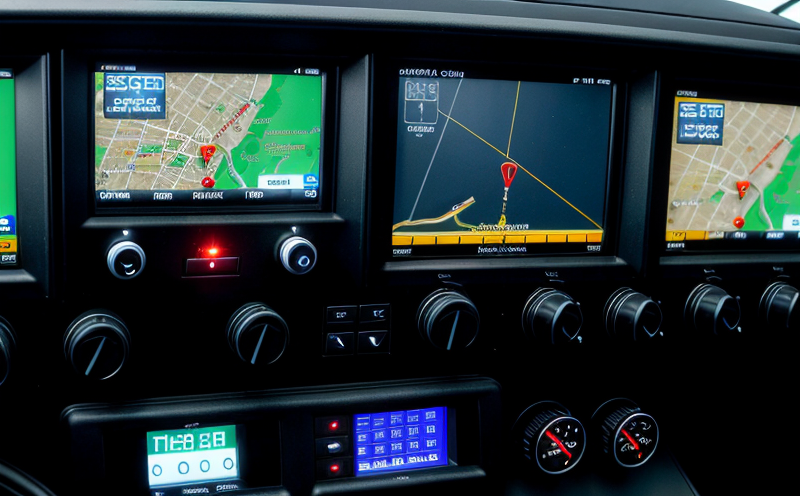EN 60598-2-22 Emergency Lighting System Performance Testing
The CEN standard, EN 60598-2-22, specifies the performance testing procedures for emergency lighting systems used in marine and ship equipment. This standard ensures that all safety-critical lighting systems meet stringent international requirements, promoting maritime safety and reducing risk of accidents.
The primary focus is on evaluating the performance characteristics of these lights under various conditions, including temperature extremes, water ingress, and functional integrity during power interruptions. Testing is critical for ensuring compliance with global standards like IEC 60598-2-22, which mandates that emergency lighting systems must function reliably in all foreseeable scenarios.
Emergency lighting plays a crucial role in maritime environments where visibility can be severely compromised due to fog, darkness, or other weather conditions. These lights are designed not only for immediate use but also as a backup power source during emergencies when the primary power supply fails.
The testing process involves subjecting the emergency lighting system to rigorous environmental and functional tests that simulate real-world operating conditions aboard ships. This includes exposure to saltwater, vibrations from ship movement, and variations in temperature and humidity levels found at sea.
Specifically, EN 60598-2-22 requires testing for:
- Light output
- Color quality
- Luminous intensity
- Uniformity of light distribution
- Power consumption and efficiency
- Resistance to water ingress (IP67)
- Durability under cyclic loading
- Operational performance during power interruptions
The testing methodology is designed to identify any potential weaknesses or non-compliance issues early on, allowing for necessary adjustments and improvements before the lighting systems are deployed in actual maritime settings.
For effective and accurate testing, specialized equipment such as photometers, spectrophotometers, and environmental chambers are used. These instruments measure critical parameters like light intensity, color temperature, and uniformity over a defined area.
The testing protocol also includes functional tests to ensure the lighting system can operate correctly under all specified conditions. This involves simulating various failure modes, such as power outages or partial circuit interruptions, to assess how well the emergency lights maintain their performance.
Compliance with EN 60598-2-22 is essential for manufacturers and suppliers of marine equipment, ensuring that their products meet the highest safety standards. Failure to comply can result in non-conformance issues during certification processes or even legal liabilities if there are incidents related to lighting failures.
By adhering to this standard, companies demonstrate their commitment to maritime safety and contribute significantly to reducing accidents at sea. This aligns with broader international efforts aimed at enhancing the overall security of marine operations.
Why It Matters
The importance of EN 60598-2-22 cannot be overstated, especially in light of recent maritime accidents where poor lighting has been identified as a contributory factor. Ensuring that emergency lighting systems are tested rigorously helps prevent such incidents by guaranteeing the reliability and performance of these critical components.
Failure to meet these standards could lead to:
- Lack of visibility in dark or adverse weather conditions
- Inability to signal for assistance during emergencies
- Potential loss of life due to navigational errors
- Increased risk of accidents and collisions
These risks are particularly acute given the vast scale of the world's oceans, where environmental factors can quickly escalate into hazardous situations. By investing in thorough testing and certification processes based on EN 60598-2-22, stakeholders can mitigate these dangers effectively.
In addition to enhancing safety, compliance with this standard also contributes positively towards sustainable practices within the maritime industry. Reliable emergency lighting ensures minimal disruption during routine operations while being prepared for unforeseen events.
Customer Impact and Satisfaction
- Enhanced confidence in product quality
- Increased market share through compliance with global standards
- Potential cost savings from reduced warranty claims due to non-compliance issues
- Better reputation among clients who prioritize safety
- Streamlined regulatory compliance processes, reducing administrative burdens
- Improved operational efficiency by ensuring readiness for all emergency scenarios
- Higher customer satisfaction levels resulting from reliable performance and peace of mind
A satisfied customer base translates into long-term business success. By partnering with a reputable laboratory that offers EN 60598-2-22 testing services, companies can ensure they meet the highest standards while maintaining excellent relationships with their clients.
Use Cases and Application Examples
| Application | Testing Requirements |
|---|---|
| Emergency Exit Lighting | Thorough testing of light output, color quality, and uniformity |
| Navigational Lights | Evaluation for resistance to water ingress and durability under cyclic loading |
| Signal Lights | Performance during power interruptions and operational efficiency checks |
| Critical Access Points | Testing for luminous intensity, color temperature, and power consumption |
In practice, these tests are conducted using state-of-the-art facilities equipped with advanced instrumentation. For instance, photometers measure light output and distribution patterns, while environmental chambers replicate the harsh conditions found at sea.





